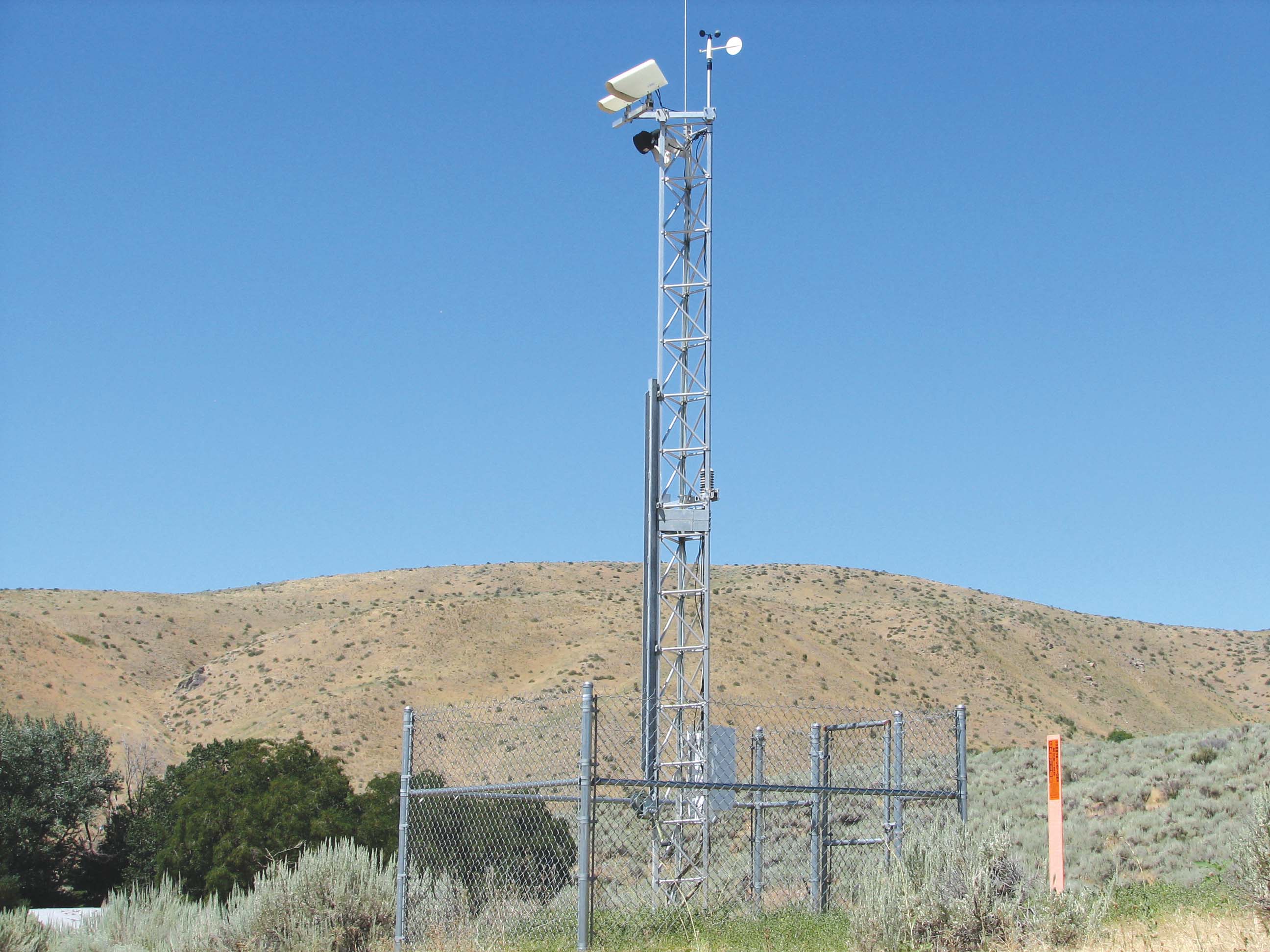
Idaho leverages the increased capability and reliability of its road weather sensor network to reduce costs and prevent accidents.
Weather-related accidents can form a significant chunk of an authorities’ annual road casualty statistics.
While authorities cannot control the weather, the technology exists to monitor the road conditions and react with warnings to motorists and the treatment of icy or snow-covered roads. However, with all capital expenditure now placed under the microscope of public scrutiny, major investments in systems like road weather stations can be difficult to justify. One of the best justifications is to show that yesterday’s investments are preventing accidents today and saving even more money into the bargain and that is exactly what the
ITD spends up to $30 million on winter maintenance and has a 500+ strong fleet for snowplough and spreading operations. It has a current network of 106 road weather stations and in 2010 it started updating these to include grip measurements and increase the availability and accuracy of the readings. Currently 103 of the 106 road weather stations have been upgraded to include pavement sensors that measure surface grip.
When design, purchase and installation is taken into account, Bob Koeberlein, mobility services engineer at IDT calculates that a new (rather than upgraded) road weather station costs around $125,000 plus a further $5,500 per year for maintenance, utilities and data management. “Idaho’s capital investment in this system is a little over $13 million and if we assumed a 10-year service life, the annual cost of each roadside sensor station is around $18,000,” he says, adding: “The question then has to be asked; ‘what’s the return on investment?’”
The first benefit was to use the output to calculate a Storm Severity Index and the Winter Performance Index with the aim of keeping the grip index above 0.6 - equivalent to a wet (rather than icy) road. This has enabled ploughing and spreading to be more precisely targeted to maintain the grip level while at the same time reducing the overall annual winter maintenance spending from $30m in 2011/12 to $21.5m in 2013/14. The Winter Performance Measures program has attracted international interest from Canada, Sweden and Belgium as well as 14 US states and several universities.
While keeping the roads open is a relatively easy metric to derive, calculating the cost of accident reductions is more difficult.
Earlier this year ITD analysed the recent expansion of the RWIS network (adding nine sites in 2011 and a further 24 in 2012) over a three-year study period using the 2010/11 season as the baseline. The 33 site locations have associated road segments that total 1,425 lane km (885 lane miles). In the winter of 2010/11 (before the site deployments started) there were 301 winter road-condition related crashes on sections of highway monitored by these 33 road weather stations. With the initial nine priority sites deployed the number of winter crashes over the 2011/12 winter fell to 226 and by 2012/13 there were 33 new sites and the initial crash rate was more than halved to 147.
As none of these winters were exceptional, a similar number of crashes would be expected each year and therefore it is reasonable to attribute the reductions from that norm (75 and 154 respectively) to the implementation of the measures outlined above. By averaging NHTSA values for fatal and serious injury crashes and including estimates for property damage, the state-wide average cost of an accident was calculated at $72,700.
The number of fatalities for the road segments studied followed the crash trends. In the season before the deployments started there were five fatalities and this dropped to one in the first year (with nine RWIS sites) and then to zero in the second year when all 33 RWIS sites were online.
This means the reduction in accidents prevented $5.4 million worth of accident-related costs in 2011/12 and an additional $11.2 million worth in 2012/13 – representing a 33 and 19 times (respectively) return on investment in installing and running the road weather station network. These ‘virtual’ societal savings don’t appear as numbers in ITD’s budget, but they directly benefit Idaho’s motorists.
Koeberlein noted that the availability of the road condition data enables better winter maintenance practices and procedures, the ability to critique winter operations after storm events, better traveller information, and automated 511 traveller information event postings and alerts. All of these directly increase the safety of the driving public.
Idaho’s upgrade campaign was prompted in part by some issues with the existing weather stations network and it worked with supplier
“Throughout the summer and for 95% of the time the sensors would work perfectly but authorities are most interested in the 5% of time during the worst of the weather and that’s when the problems were occurring,” says Vaisala’s product manager Jarno Karjalainen.
In worldwide examinations of existing installations, Vaisala found that some of the downtime was traceable to maintenance shortcomings but there were problems with the equipment itself. The power supplies were a case in point as they operated faultlessly in the summer but stared to fail as the temperature dropped.
“According to the specification sheet the power supply should operate down to -40°C but when we tested them some failed at -20°C, so we contacted the suppliers and told them. But they didn’t redesign the product, they just changed their spec sheet,” says Karjalainen.
Having sourced alternative suppliers and tested both components and assemblies down to -40°C, Vaisala is confident its new sensors are far more reliable and these, and other, enhancements have been included in the new RWS200 new road weather station.
“Pretty much they look similar to the existing system and the functionality of new unit is the same but the accuracy, reliability and maintenance costs have all been improved,” says Karjalainen.
Uptime for the revised road weather sensor is exceeding 98% and retrofitting is possible.
As is something of a universal trend, the required processing capability can now be located in the roadside box rather than all output being streamed back to a data collection and processing system in the operations centre. By incorporating its RoadDSS software with the roadside unit, Vaisala said it is able to offer what it calls an intelligent road weather information system (iRWIS).
By using advanced algorithms iRWIS combines raw data from the RWS200’s pavement sensor with other atmospheric information to calculate the surface conditions. Doing this at the actual installation enables all calibrations and corrections to be factored in at the source, making the final readout more accurate. During inclement weather this information can then be sent back to the control centre in real time or it can report by exception to alert centre staff to deteriorating road conditions.
Control centre and maintenance staff also have access to all information on the service and calibration history of each roadside sensor so confidence in the data is much higher when road treatment decisions have to be made.
“When you are getting close to a critical reading, be that the road temperature or the dew point, then sensor accuracy becomes very important and road authorities can have far more confidence in the new system. This, in turn enables them to tailor their response - perhaps in a similar way to Idaho,” Karjalainen says.
In addition, servicing and calibration is scheduled far more accurately and maintenance personnel know what is required for each cabinet they visit before staring their journey.
Beyond having a power supply that can withstand low temperatures, the iRWIS cabinet also houses a battery and smart power management system to ensure continued data collection in the event of a power failure. Should it be necessary, the operator still has the option to read the data directly from the sensor.
As Idaho has demonstrated, safety improvements and considerable savings are possible once you have a reliable source of accurate road weather data,” Karjalainen says.













